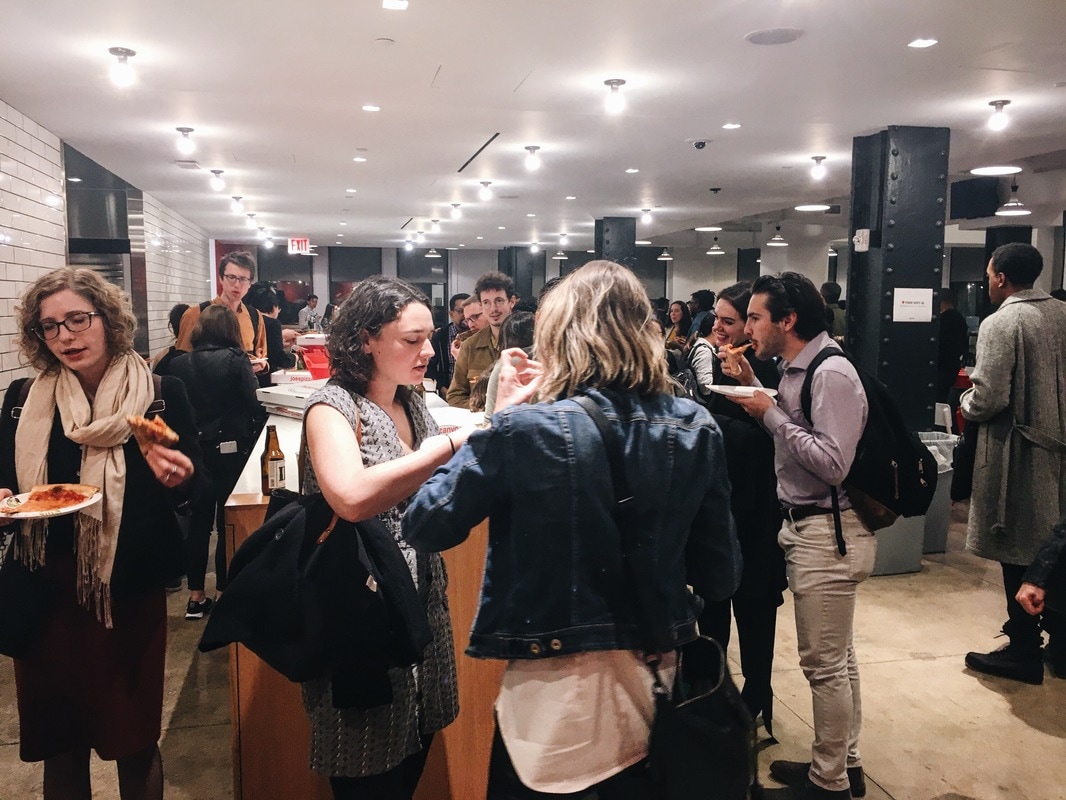Design Driven NYC is a monthly event organized by Firstmark to inspire design enthusiasts through the stories from entrepreneurs and industry leaders in the design community. The organizers believe that “great design is storytelling at its finest, and that it is a critical element to any successful product.”
On 5th April, we attended their 26th Design Driven event held at BuzzFeed’s office. The featured speakers were Alain Sylvain (Founder/CEO of Sylvain Labs), Marcela Sapone (Founder/CEO of Hello Alfred), Luke Chesser (Founder/CPO of Unsplash) and Bonnie Siegler (Founder/CEO of Eight and a Half).
Here’s a recap of what we learned during the engaging exchanges between the presenters and the audience.
When designing a product for users, we have to understand the complexities of a user’s needs. In short, what drives people to do what they do. During his speech, Alain touched on different solutions to make sense of a user’s needs.
-
- Physical need vs Emotional need: Is the need driven by actions or feelings?
Eg “I need to go to the restaurant to get my lunch” vs “I need to talk to my boss to tell him how i feel” - Timeless need vs Timely need: Does the need lasts indefinitely or happens immediately? Eg “I need to check up on my loved ones to stay in touch” vs “I need the ATM machine to work now”
- Conscious need vs Unconscious need: Is the user aware or unaware of his or her needs?Eg “I want to get good grades” vs “I need to do well in school to show that i’m smart and capable”
- Physical need vs Emotional need: Is the need driven by actions or feelings?
- Using Desire-Motivation-Tension model:
As a user, I need/want ________ so that ________ but ________.
Eg. As a CEO, I want to ensure that all the employees are working diligently and productively so that we can show progress but it is so difficult to keep track of the responsibilities that each employee has at hand and accommodate to different working styles.
She believes that when designing for UX of trust, you will need to increase friction to increase trust. Instead of hiring an employee with 1099 form for the role of an Alfred (what the butlers are referred to as), she and her team decided to hire W2 employees. From an employer’s perspective, hiring employees with a 1099 form is usually preferred as they would be able to spend less on staffing since the 1099 form regulations do not require them to cover benefits that a W2 employee would receive.
However, Marcela views that using W2 employees would be necessary in increasing the users’ trust towards the Alfreds since W2 employees are full-time employees as compared to contractual 1099 employees. Even if this decision increases friction, the company still insists on hiring W2 employees and ensures that they are carefully-screened through background checks (identity, criminal and credit), references, and in-person interviews to build trust between the users and the Alfreds.
As such, her team built a task list with toggle buttons and this was an efficient way for users to manage all their tasks at one go through a familiar interface. A profile image of the Alfred is strategically placed at the top of the application to remind users that a human is completing their tasks for them and an operational tracker is displayed beneath each task. This gives users the ability to see what is happening with all their requests. As the Alfred is out in the field doing things, the tracker stays up to date. Users love watching the progress across their tasks, engaging users with habit-forming designs.
The application also included profile and background stories of Alfreds to minimize the transactional nature of their relationship and create a new relationship of trust. Every design was intentionally created to allow the application to be as transparent and human as possible. Every point of contact with the users on the Hello Alfred application was thoughtfully planned to increase trust between users and their Alfreds.







